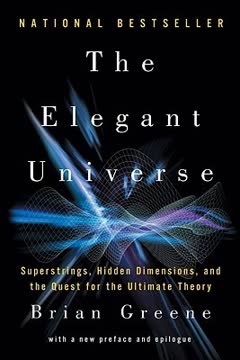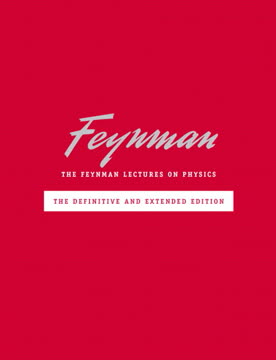Key Takeaways
1. Electromagnetism: The Unified Force of the Universe
The atomic motions of a distant star still have sufficient influence at this great distance to set the electrons in our eye in motion, and so we know about the stars.
A fundamental force. Electromagnetism is one of the most powerful forces in the universe, governing the interactions between charged particles. It's responsible for a vast array of phenomena, from the attraction between a comb and hair to the workings of complex electrical machinery.
Perfectly balanced. The strength of electrical forces is balanced in matter, with positive protons and negative electrons forming tight, fine mixtures. This balance is so precise that even a tiny imbalance would result in forces capable of moving mountains.
Far-reaching influence. The influence of electromagnetism extends across vast distances, allowing us to perceive stars billions of light-years away. This is possible because electromagnetic fields fall off inversely with distance, enabling even faint signals to reach us.
2. Vector Calculus: The Language of Field Theories
The physicist needs a facility in looking at problems from several points of view.
Mathematical tool. Vector calculus provides a powerful set of tools for describing and analyzing physical fields, such as electric and magnetic fields. It allows us to express complex relationships in a concise and elegant manner.
Key concepts:
- Gradient: Describes the rate of change of a scalar field
- Divergence: Measures the "outflow" of a vector field from a point
- Curl: Measures the "circulation" or rotation of a vector field around a point
Understanding equations. Mastering vector calculus is essential for understanding the fundamental equations of electromagnetism and other field theories, enabling physicists to solve problems and gain insights into the behavior of physical systems.
3. Gauss' and Stokes' Theorems: Essential Tools for Understanding Fields
The laws of physics are independent of direction.
Gauss' Theorem. Gauss' theorem relates the flux of a vector field through a closed surface to the divergence of the field within the enclosed volume. This theorem is particularly useful for calculating electric fields in situations with symmetry.
Stokes' Theorem. Stokes' theorem relates the circulation of a vector field around a closed loop to the curl of the field over any surface bounded by the loop. This theorem is essential for understanding magnetic fields and their relationship to electric currents.
Applications. These theorems provide a powerful way to connect local properties of fields (divergence and curl) to their global behavior (flux and circulation). They are essential for understanding and solving problems in electromagnetism and other areas of physics.
4. Electrostatics: Fields from Fixed Charges
The test of all knowledge is experiment.
Coulomb's Law. Coulomb's law describes the force between stationary electric charges, which is proportional to the product of the charges and inversely proportional to the square of the distance between them. This law forms the foundation of electrostatics.
Superposition Principle. The principle of superposition states that the total electric field at a point is the vector sum of the electric fields produced by each individual charge. This principle allows us to calculate the electric field for any distribution of charges.
Electrostatic Potential. The electrostatic potential is a scalar field that simplifies the calculation of electric fields. The electric field is the negative gradient of the potential, providing a direct link between these two fundamental quantities.
5. The Dance of Charges: Equilibrium and Conductors
You should, in science, believe logic and arguments, carefully drawn, and not authorities.
Equilibrium in Electrostatic Fields. A point charge cannot be in stable equilibrium in an electrostatic field unless it is located directly on top of another charge. This is because the electric field must point inward from all directions, violating Gauss' law.
Conductors and Equipotentials. Conductors are materials with free charges that redistribute themselves to create a zero electric field inside. As a result, conductors are equipotential regions, and their surfaces are equipotential surfaces.
Gauss' Law and Conductors. Gauss' law can be used to relate the electric field just outside the surface of a conductor to the local surface charge density. This relationship is essential for understanding the behavior of charges on conductors.
6. Optics: Unveiling the Secrets of Light's Path
The test of all knowledge is experiment.
Light's Nature. Light exhibits both wave-like and particle-like properties, a concept central to quantum mechanics. Understanding light requires considering both aspects, depending on the specific phenomena being investigated.
Reflection and Refraction. When light encounters a boundary between two media, it undergoes reflection and refraction. The laws governing these phenomena, such as Snell's law, can be derived from Fermat's principle of least time.
Fermat's Principle. Fermat's principle states that light travels along the path that takes the least time. This principle provides a powerful and elegant way to understand the behavior of light, including reflection, refraction, and the formation of images by lenses and mirrors.
7. Interference and Diffraction: Wave Phenomena Explained
The test of all knowledge is experiment.
Interference. Interference occurs when two or more waves overlap, resulting in constructive or destructive interference depending on their relative phases. This phenomenon is responsible for the colorful patterns observed in thin films and diffraction gratings.
Diffraction. Diffraction is the bending of waves around obstacles or through narrow openings. It arises from the superposition of waves emanating from different points in the aperture, leading to characteristic patterns of intensity.
Huygens' Principle. Huygens' principle provides a way to understand diffraction by considering each point on a wavefront as a source of secondary spherical waves. The superposition of these wavelets determines the amplitude and phase of the wave at any point in space.
8. Refraction: Bending Light with Atomic Oscillations
The test of all knowledge is experiment.
Index of Refraction. The index of refraction (n) describes how much slower light travels in a medium compared to a vacuum. This slowing down is due to the interaction of light with the atoms in the material.
Atomic Oscillations. When light passes through a material, it causes the electrons in the atoms to oscillate. These oscillating electrons then radiate their own electromagnetic waves, which interfere with the original light wave.
Dispersion Equation. The interference between the original light wave and the waves radiated by the oscillating electrons results in a change in the effective speed of light, leading to the phenomenon of refraction. The dispersion equation relates the index of refraction to the frequency of light and the properties of the atoms in the material.
9. Polarization: The Directional Nature of Light
The test of all knowledge is experiment.
Electric Vector of Light. Light is an electromagnetic wave with an electric field vector that oscillates in a plane perpendicular to the direction of propagation. The direction of this oscillation defines the polarization of light.
Polarization Phenomena. Polarization phenomena arise from the directional nature of light's electric field vector. These phenomena include polarization by scattering, birefringence, and optical activity.
Applications of Polarization. Polarizers, materials that transmit light with a specific polarization, have numerous applications in optical instruments, displays, and scientific research.
10. Relativity: Electromagnetism's Intrinsic Symmetry
The test of all knowledge is experiment.
Principle of Relativity. The principle of relativity states that the laws of physics are the same for all observers in uniform motion. This principle has profound implications for our understanding of space, time, and electromagnetism.
Lorentz Transformation. The Lorentz transformation describes how space and time coordinates transform between different inertial frames. This transformation preserves the speed of light and ensures that Maxwell's equations remain invariant.
Electromagnetic Field Transformation. Electric and magnetic fields are not independent entities but are different aspects of a single electromagnetic field. The Lorentz transformation mixes electric and magnetic fields, demonstrating their interconnectedness.
11. Statistical Mechanics: Linking Microscopic Motion to Macroscopic Properties
The test of all knowledge is experiment.
Kinetic Theory of Gases. The kinetic theory of gases explains macroscopic properties like pressure and temperature in terms of the microscopic motion of gas molecules. This theory provides a bridge between the microscopic and macroscopic worlds.
Boltzmann Law. The Boltzmann law describes the probability of finding molecules in a given spatial arrangement based on their potential energy and the temperature of the system. This law is fundamental to understanding the distribution of molecules in various physical and chemical systems.
Applications of Kinetic Theory. Kinetic theory can be applied to understand a wide range of phenomena, including evaporation, thermionic emission, thermal ionization, and chemical kinetics. These applications demonstrate the power of statistical mechanics in explaining the behavior of matter.
12. Quantum Mechanics: The End of the Classical World
The test of all knowledge is experiment.
Quantum Behavior. Quantum mechanics reveals that particles exhibit wave-like behavior and waves exhibit particle-like behavior. This wave-particle duality challenges our classical intuition and requires a new way of thinking about the nature of reality.
Uncertainty Principle. The uncertainty principle states that there is a fundamental limit to the precision with which we can simultaneously know certain pairs of physical quantities, such as position and momentum. This principle has profound implications for the nature of measurement and the limits of predictability.
Wave-Particle Viewpoints. Quantum mechanics unifies the wave and particle viewpoints, showing that they are complementary aspects of the same underlying reality. This unification requires a shift in our understanding of the nature of matter and energy.
Last updated:
FAQ
What's The Feynman Lectures on Physics about?
- Comprehensive Overview: The Feynman Lectures on Physics by Richard P. Feynman is a collection of lectures that provide a broad introduction to various physics topics, including mechanics, electromagnetism, and quantum mechanics.
- Engaging Teaching Style: Feynman’s unique and engaging teaching style makes complex concepts accessible, using humor and real-world examples to illustrate abstract ideas.
- Historical Context: Originally delivered at Caltech between 1961 and 1964, these lectures reflect Feynman's innovative approach to teaching and have significantly influenced physics education worldwide.
Why should I read The Feynman Lectures on Physics?
- Insight from a Master: Richard P. Feynman, a Nobel Prize-winning physicist, is renowned for his ability to explain complex topics simply and engagingly, offering readers a chance to learn from one of the greatest minds in physics.
- Foundational Knowledge: The book provides a solid foundation in physics, covering essential concepts crucial for further study in science and engineering.
- Inspiration and Curiosity: Feynman’s passion for physics is infectious, encouraging readers to explore and question the world around them, fostering a lifelong interest in science.
What are the key takeaways of The Feynman Lectures on Physics?
- Interconnectedness of Physics: Feynman illustrates how different areas of physics are interconnected, emphasizing that understanding one concept often requires knowledge of others.
- Importance of Experimentation: The book stresses the significance of experimentation in physics, highlighting that theories must be tested and validated through observation.
- Conceptual Understanding: Feynman advocates for understanding the underlying principles rather than rote memorization of equations, fostering a genuine appreciation for the beauty of physics.
What are the best quotes from The Feynman Lectures on Physics and what do they mean?
- "The most important thing is to not stop questioning.": This quote underscores the value of curiosity and the pursuit of knowledge, encouraging readers to maintain an inquisitive mindset.
- "Physics is like sex: sure, it may give some practical results, but that's not why we do it.": Feynman humorously conveys that the joy of physics lies in exploration and understanding, rather than just practical applications.
- "If you thought that science was certain—well, that is just an error on your part.": This quote reflects the inherent uncertainties in scientific inquiry, reminding readers that science is a process of exploration and discovery.
How does The Feynman Lectures on Physics explain the concept of energy?
- Energy as a Central Concept: Feynman describes energy as a fundamental quantity in physics that can take various forms, such as kinetic, potential, thermal, and chemical energy.
- Conservation of Energy: He emphasizes the principle of conservation of energy, stating that energy cannot be created or destroyed, only transformed from one form to another.
- Real-World Applications: Feynman illustrates energy concepts through practical examples, such as mechanical systems and thermodynamics, helping readers relate abstract ideas to tangible experiences.
What is the uncertainty principle in The Feynman Lectures on Physics?
- Fundamental Quantum Concept: The uncertainty principle is a cornerstone of quantum mechanics, stating that certain pairs of physical properties cannot be simultaneously known with arbitrary precision.
- Implications for Measurement: Feynman discusses how the uncertainty principle challenges classical notions of determinism, implying that at a quantum level, the act of measurement itself affects the system being observed.
- Philosophical Considerations: The principle raises important questions about the nature of reality and our understanding of the universe, encouraging readers to contemplate its philosophical implications.
How does Feynman explain wave-particle duality in The Feynman Lectures on Physics?
- Dual Nature of Light: Feynman discusses how light exhibits both wave-like and particle-like properties, depending on the experimental setup.
- Experiments Illustrating Duality: He references key experiments, such as the double-slit experiment, to demonstrate how light behaves differently when observed.
- Implications for Quantum Theory: This duality challenges classical intuitions and is a cornerstone of quantum mechanics, leading to the development of theories that incorporate both aspects.
What is the significance of Maxwell's equations in The Feynman Lectures on Physics?
- Foundation of Electromagnetism: Maxwell's equations are presented as the fundamental laws governing electric and magnetic fields, describing how these fields interact and propagate through space.
- Unified Framework: The equations unify electricity and magnetism into a single framework, demonstrating their interdependence and forming the backbone of classical electromagnetism.
- Technological Applications: Feynman explains how these principles are applied in various technologies, from electric motors to communication systems, highlighting their importance in modern advancements.
How does Feynman describe the relationship between electricity and magnetism in The Feynman Lectures on Physics?
- Interconnected Phenomena: Feynman emphasizes that electricity and magnetism are two aspects of the same fundamental force, known as electromagnetism.
- Experimental Evidence: He discusses historical experiments that demonstrated the relationship between electric currents and magnetic fields, laying the groundwork for the unification of the two fields.
- Practical Applications: Feynman highlights the importance of understanding this relationship for technological advancements, such as electric motors and generators.
What is the principle of least action in The Feynman Lectures on Physics?
- Fundamental Concept: The principle of least action states that the path taken by a system between two states is the one for which the action is minimized.
- Mathematical Formulation: Feynman explains that the action is defined as the integral of the Lagrangian over time, which combines kinetic and potential energy.
- Applications: This principle is used to derive the equations of motion in various physical systems, providing a unifying framework for understanding dynamics across different fields of physics.
How does Feynman explain the concept of fields in The Feynman Lectures on Physics?
- Definition of Fields: Feynman describes fields as conditions in space produced by masses or charges that exert forces on other objects placed within them.
- Field Equations: The book discusses how the strength of a field can be expressed mathematically, allowing for the calculation of forces acting on objects within the field.
- Superposition Principle: Feynman explains that the total field produced by multiple sources is the vector sum of the individual fields, simplifying the analysis of complex systems.
What is the significance of quantum mechanics in understanding atomic structure in The Feynman Lectures on Physics?
- Foundation of Atomic Theory: Feynman explains that quantum mechanics provides the framework for understanding atomic structure and behavior, replacing classical models with a probabilistic approach.
- Energy Levels and Orbitals: He discusses how quantum mechanics leads to the quantization of energy levels in atoms, resulting in distinct electron orbitals.
- Implications for Chemistry: Feynman highlights the significance of quantum mechanics in chemistry, particularly in explaining bonding and molecular interactions.
Review Summary
The Feynman Lectures on Physics receives high praise for its accessible explanations of complex physics concepts. Readers appreciate Feynman's unique teaching style, deep insights, and ability to simplify difficult topics. Many consider it an essential read for physics students and enthusiasts, noting its comprehensive coverage and engaging approach. Some reviewers mention the lectures' challenging nature, particularly for those without a strong math background. Overall, the series is lauded as a masterpiece that offers a fresh perspective on physics, inspiring countless readers to explore the subject further.
Similar Books










Download PDF
Download EPUB
.epub digital book format is ideal for reading ebooks on phones, tablets, and e-readers.









